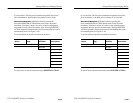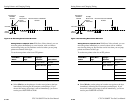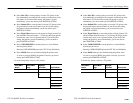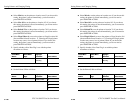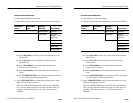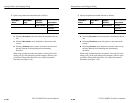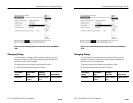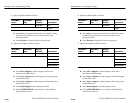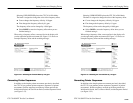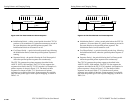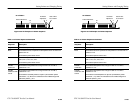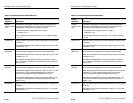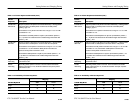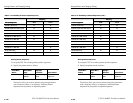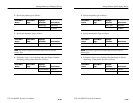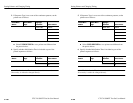
Setting Pointers and Changing Timing
CTS 710 SONET Test Set User Manual
3–151
Selecting USER DEFINED places the CTS 710 in Edit Mode.
The knob is assigned to change the value of the frequency offset.
H Coarse changes the frequency offset by 10.0 ppm.
H Fine changes the frequency offset by 0.1 ppm.
The frequency offset can be changed by ±100.0 ppm.
H Select DONE to enter the frequency offset when you are
finished setting it.
When using a frequency offset, a message line in the display tells
you the equivalent pointer movement rate. Figure 3–51 shows an
example frequency offset and the resulting message.
Figure 3–51: Offsetting the Transmit Rate by +4.6 ppm
Generating Pointer Sequences
In addition to the simpler pointer movements previously described,
the CTS 710 can generate pointer sequences (sequences of pointer
movements). Pointer sequences are made up of three periods: the
Initialization Period, the Cool Down Period, and the Sequence Period
(see Figure 3–52).
Setting Pointers and Changing Timing
CTS 710 SONET Test Set User Manual
3–151
Selecting USER DEFINED places the CTS 710 in Edit Mode.
The knob is assigned to change the value of the frequency offset.
H Coarse changes the frequency offset by 10.0 ppm.
H Fine changes the frequency offset by 0.1 ppm.
The frequency offset can be changed by ±100.0 ppm.
H Select DONE to enter the frequency offset when you are
finished setting it.
When using a frequency offset, a message line in the display tells
you the equivalent pointer movement rate. Figure 3–51 shows an
example frequency offset and the resulting message.
Figure 3–51: Offsetting the Transmit Rate by +4.6 ppm
Generating Pointer Sequences
In addition to the simpler pointer movements previously described,
the CTS 710 can generate pointer sequences (sequences of pointer
movements). Pointer sequences are made up of three periods: the
Initialization Period, the Cool Down Period, and the Sequence Period
(see Figure 3–52).



